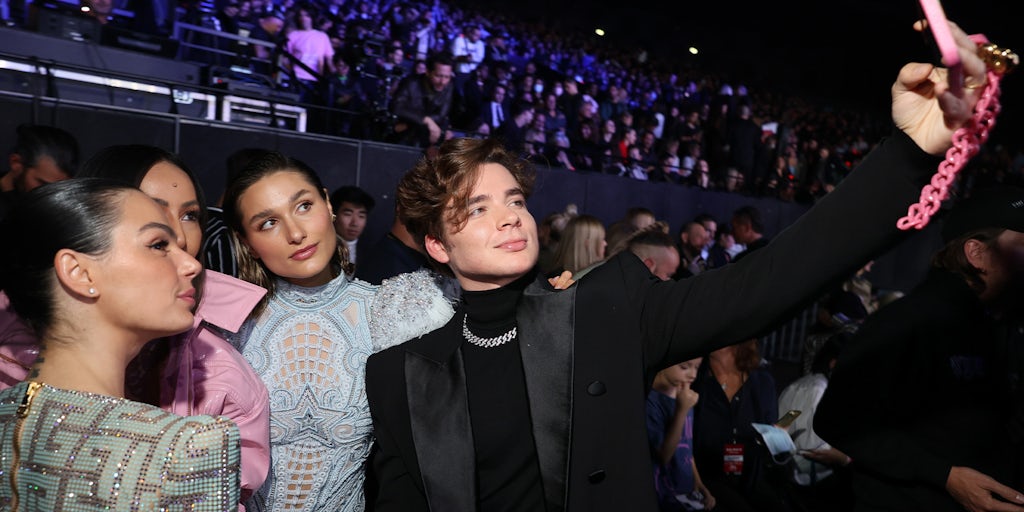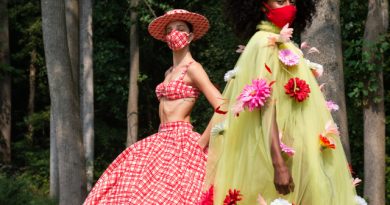Cult Los Angeles Vintage Dealer Mothfood Offers a Window to the Past – WWD
On an unassuming street in Los Angeles’ Mount Washington neighborhood lies a storefront that, with its whited-out windows, would strike most people as abandoned. Knock on the door, however, and you’ve gained entry to one of the city’s most prominent by-appointment vintage showrooms.
The dealer Tommy Dorr — whose operation is known as Mothfood — welcomes stylists, actors and musicians to the industrial space that is crammed with Americana workwear, denim and antique garments all the way from its poured concrete floor up to its ceiling.
Dorr — who once lived in the space — has gradually amassed a cult following since entering Los Angeles’ vast vintage-dealing grind in 2014. And since the pandemic, Mothfood’s Instagram account, with more than 35,000 followers, and e-commerce site have become equally popular for those who don’t live on the West Coast.
The Michigan native helped Emily Adams Bode launch her brand by providing source materials like fabric and trims and granting her access to buying trips before Bode’s first show in 2015.
Dorr’s showroom has become a respite for TV stylists from shows including “Euphoria” and “Stranger Things” and celebrities including Angelina Jolie, Ewan McGregor and Chris Pine. They all drive to his space at the edge of Highland Park to experience a slice of vintage’s past life — its rummage culture and a whiff of a musty underground.
“That’s why I like having a by-appointment type of thing,” Dorr said of the format, rather than owning a store. “I just think nowadays everything is so out in the open with social media, and everything is too accessible. I wanted to develop this concept and have privacy for people to shop or get inspiration and just have an intimate experience without it being blown up.”
While many vintage dealers in Los Angeles focus on archival haute couture (à la Aralda vintage) or punchy special-occasion looks (like at Recess Consign) to suit L.A’.s churn of red carpets and demand for eveningwear — Dorr’s focus is entirely different. He is in constant search of hard-to-find, well-worn items that can be used every day.
Inside the Mothfood studio.
“I have a lot of utilitarian clothing: T-shirts, sweatshirts, military-type stuff. Stuff without a label. A lot of things from the ’40s through ’60s is my sweet spot,” Dorr said.
He hosts around 15 appointments in the space per week, all of which require hours for shoppers to go through its crush of racks and neatly folded piles. And Dorr, who has the nonchalance of a weathered New Yorker, pays them little mind. He passes the time by fiddling on his phone or monitoring a web drop, adding an extra layer of privacy.
“I get a lot of musicians or established actors — the kinds of people who maybe used to shop vintage but don’t anymore. I feel like I hit a sweet spot because I carry true vintage in here,” he said.
But for all Dorr’s confidence, he was unsure if the environment — that still has his old refrigerator and other personal effects — was elevated enough. “I was going back and forth if I should keep them, but I feel like it’s who I am. I think people appreciate how down-to-earth it is in here and how raw it is,” he said of the space, which — also on par with vintage stores of times past — has a constant plume of incense hovering in the air.
While he plans weekly online drops, often of T-shirts, Dorr stockpiles special items that are only seen on in-person visits to the showroom.
Many of those pieces come by Dorr’s sourcing network in Japan — a group of antique dealers who send him the clothes they encounter while in search of prized lacquerware or cypress wood furniture.
On a recent afternoon, hanging high on the showroom wall was an antique Japanese nurse’s jacket that — with its belled sleeves and careful proportions — could have been mistaken for vintage Margiela. Dorr has become a specialist in 1940s Japanese railworker uniform pieces that are now collector’s items among petite Los Angeles women.
Like many of his peers, Dorr’s career in vintage has been marked by the market’s quick ascent into the mainstream. It’s why people appreciate the experience he offers — a space where they’re not contending with teenage enthusiasts looking for a shirt to sell on eBay at a high markup.
Where he used to post photos of himself atop a rag-picking pile in a gas mask, Dorr says his interest has shifted along with the industry. He used to drive cross-country on sourcing trips, but is now digging into networks outside of the U.S. to offer his shoppers fresh channels of old things.
But Dorr sees vintage’s growth as an overall positive: “You can go to Urban Outfitters or Kohl’s now and there’s a vintage thing. But now that there’s more dealers, there are way more buyers. Even my family asks me about vintage now and they wouldn’t have done that back in the day. It’s not used clothing anymore, it’s just part of fashion.”






